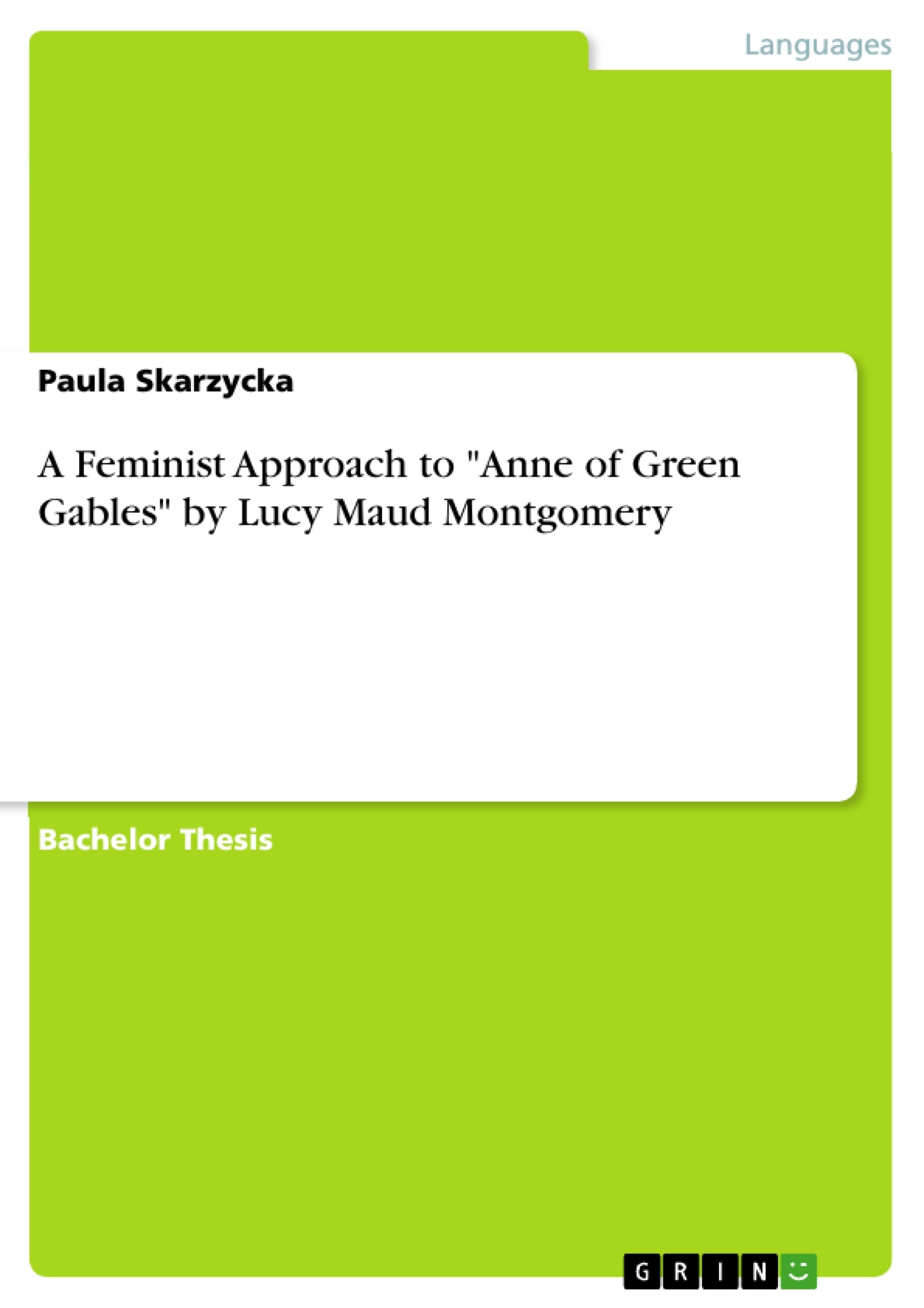To what extent does the representation of women (and men) in the work "Anne of Green Gables" by Lucy Maud Montgomery reflect the place and time in which the work was written? How are the relationships between men and women or those between members of the same sex, presented in the work? The thesis deals with the question whether Anne of Green Gables series could be seen as a feminist one.
Anne Shirley might be seen as a feminist character - she is smart, intelligent, achieves more than the majority of her peers, she is not feeble and she is able to escape some of the most prevailing stereotypes about women of the Western world.
Anne Blythe, however, changes into a matron, whose only interests are gossiping, matchmaking and being Mrs. Dr., a respectable woman. Relationships shown in the earlier novels are quite feminist—they are either equal or the woman is the empowered partner. Characters are allowed to voice critical opinions on men and marriage, and these opinions are not ridiculed. Later on it changes for the worse—women are always the submissive ones, spinsters are not respectable, and unconventional opinions are mocked.
Anne of Green Gables series is not a feminist one - only the earlier novels possess the necessary characteristics.
Inhaltsverzeichnis (Table of Contents)
- Introduction
- The Canadian Problem
- Anne in the Eyes of the Feminist
- Chapter I: Anne Shirley vs. Tropes
- 1.1 “The Lovable Alpha Bitch That Dies”
- 1.2 \"The Apron Matron That Gossips”
- 1.3 \"The Capable Damsel in Distress”
- 1.4 “The Proper Lady”
- 1.5 \"The Manic Pixie Dream Girl”
- Chapter II: Tropes vs. Anne Blythe
- 2.1 \"The Proper Lady”
- 2.2 \"The Gossipy Hen”
- 2.3 \"The Housewife”
- 2.4 \"The Dying Swan”
- Chapter III: Relationships
Zielsetzung und Themenschwerpunkte (Objectives and Key Themes)
This thesis examines the portrayal of Anne Shirley, the protagonist of Lucy Maud Montgomery's *Anne of Green Gables* series, through a feminist lens. It seeks to challenge traditional interpretations of Anne's character and explore how her life choices, relationships, and experiences reflect the societal expectations and limitations placed upon women in late 19th and early 20th century Canada.
- Feminist interpretations of Anne Shirley's character
- The influence of societal expectations on women's lives in early 20th century Canada
- The impact of social and political context on the portrayal of female characters in literature
- Analysis of Anne Shirley's relationships and her role in society
- Examination of the limitations and opportunities faced by women in the time period
Zusammenfassung der Kapitel (Chapter Summaries)
Chapter I explores the various character tropes commonly associated with female characters in literature and examines how they apply, or do not apply, to Anne Shirley. Chapter II further analyzes the intersection of societal expectations and Anne's life choices, focusing on how she defies or conforms to traditional feminine roles. Chapter III explores the nature of Anne's relationships with both male and female characters, highlighting the dynamics of power and influence within these interactions.
Schlüsselwörter (Keywords)
Key terms and concepts explored in this thesis include feminist theory, character tropes, gender roles, societal expectations, Canadian history, women's rights, and literary analysis.
- Quote paper
- Paula Skarzycka (Author), 2014, A Feminist Approach to "Anne of Green Gables" by Lucy Maud Montgomery, Munich, GRIN Verlag, https://www.grin.com/document/277487




